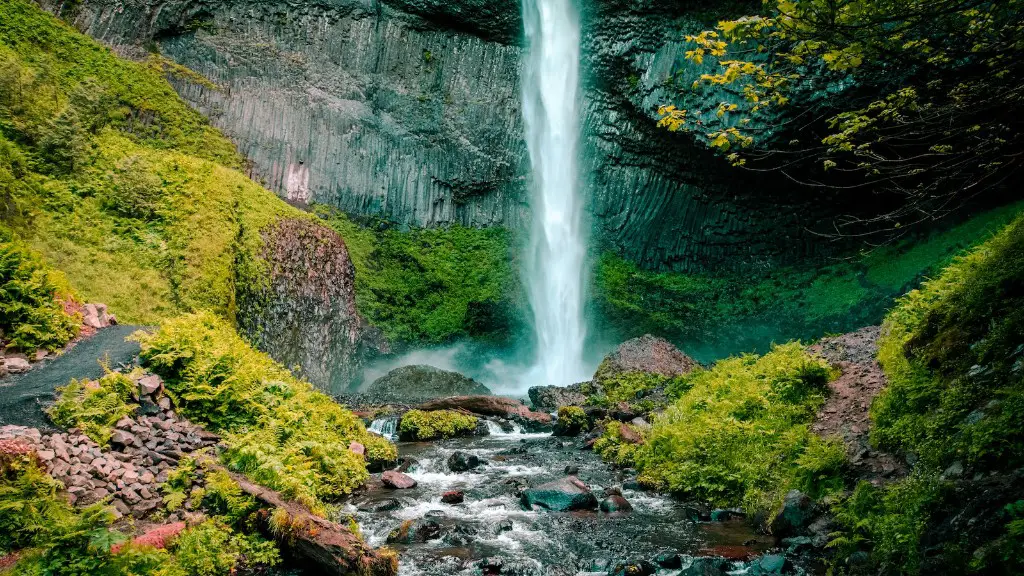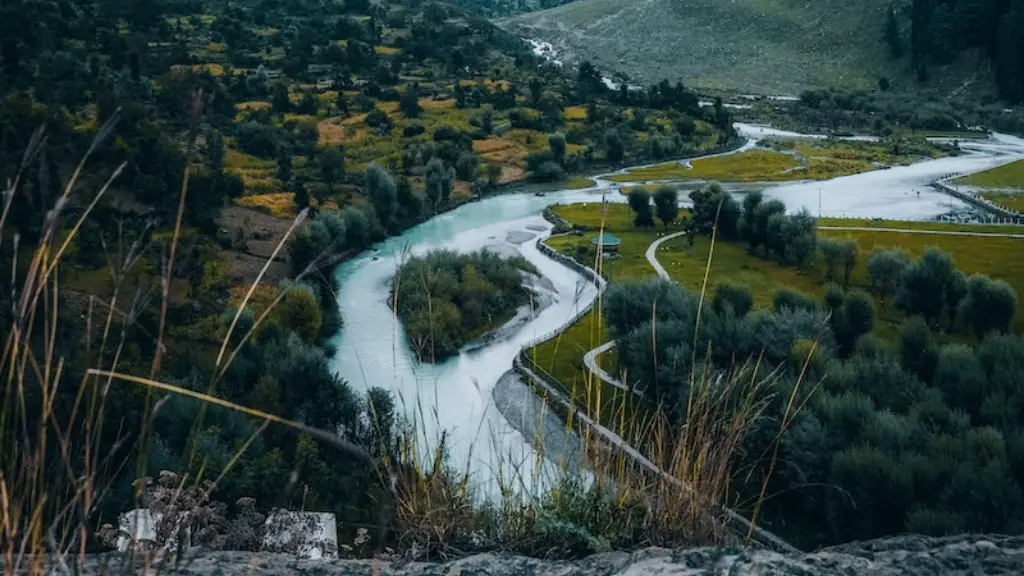A Look Into What Has Been Found In The Mississippi River
The mighty Mississippi River is the second longest river in the United States, stretching from Minnesota to Louisiana and supporting millions of people who rely on its resources. For centuries, the river has been a major source of trade and transportation, providing access to the heartlands of America. But this river also has something more to offer than its utility – what have they found in the Mississippi River?
The Mississippi River is home to a diversity of plants and animals, and its waters contain a variety of life. Among the creatures usually found are numerous fish species, mollusks, and crustaceans. These animals can often be found at the river’s mouths and in its deeper pools, where they feed off of the nutrients this massive river has to offer.
In addition to the animals, the Mississippi River is also home to a variety of archaeological artifacts. From the ancient Native American villages on its banks to the remnants of many early American settlements, the river holds a dazzling array of artifacts that give us a glimpse into the history of the region.
As a result of the archaeological discoveries made in the area, researchers have been able to uncover a wealth of information about the history and culture of the Native American nations that lived along the Mississippi, such as the Chickasaw, Choctaw, and Creek.
Clear evidence of European influence is also evident in the archaeological remains of the early American settlements along the Mississippi. Remains of houses, taverns, stores, and wharves have been uncovered, providing clues as to the way of life of the people who lived here.
In recent years, the Mississippi River has become a focal point for ecological efforts and conservation projects. Environmental conservationists have focused on preserving the river’s rich ecosystem, which includes a multitude of plant and animal species, and protecting the unique habitats the river provides to a variety of plants, birds, reptiles, and amphibians.
The river is also a major source of research into changing climate patterns, as this is a major area affected by global warming. Scientists have collected data in the area to measure the increasing water temperatures and other changes in the environment, which will be essential to understanding how to tackle the climate crisis.
The Impact of Pollution on the Mississippi River
As more human activities continue to be present in the area, they have caused significant damage to the environment of the Mississippi River and its surrounding areas. Pollution from agricultural and industrial run-off, as well as the dumping of toxic waste, has adversely affected the health of the river. As a result, the river’s ecosystem has become increasingly damaged, with its plant and animal species threatened or even wiped out.
The BP oil spill in 2010 further exacerbated the already damaged environment of the river, as a vast amount of toxic oil spread across the area and resulted in a mass wildlife death. Since then, conservation groups have worked to protect and reclaim the area, but its ecosystem is still recovering from the oil spill’s aftermath.
Environmental protection of the Mississippi River is an important cause, and experts are pushing for increased governmental conservation efforts to protect this vital area. So far, there have been some positive developments, such as the passage of the Clean Water Act of 1972, which toughened standards on industrial pollutants, and the creation of a U.S. Fish and Wildlife Service Gulf of Mexico-Mississippi River Basin Task Force in 2010.
The Mississippi River is an important source of life, history, and culture, and environmental efforts are essential to ensure the health of this vital natural resource.
How Mississippi’s Economy Has Benefited From The Mississippi River
The Mississippi River is a major component of the economy of the states it flows through, providing affordable and efficient transportation for goods, which helps reduce prices and create jobs. Moreover, the river is a major source of tourism, as people come from near and far to admire its beauty, experience its rich history, and savor its unique cuisine.
The area’s agricultural industry has benefited greatly from the river, as its rich soils and plentiful resources have allowed for the growth of crops and other plants. In addition, the port cities and small towns along the river have become important junctures of trade, with goods and services passing through on their way to and from various destinations.
The river has also been a source of renewable energy, providing hydroelectric power to the surrounding areas. This energy source is cost-effective and efficient, helping to provide energy to the thousands of homes and businesses connected to the grid.
As well as this, the river is also a significant source of freshwater to the area, providing clean drinking water to those who live along its banks. This has been especially beneficial during times of drought, serving as a dependable source of water even in times of scarcity.
Overall, the Mississippi River plays an important role in the economy of the states it flows through, supporting millions of lives and helping to create a prosperous environment.
What Is Being Done To Clean Up The Mississippi River
In light of the pollution and destruction of the environment caused by human activities around the Mississippi River, many steps have been taken in recent years to restore its health. These include efforts by conservation groups, governmental regulations, and the commitment of individuals and businesses to the protection of the river.
The Environmental Protection Agency and other agencies have created waterway standards, increased inspections, and provided grants to support the preservation of natural habitats, while volunteer groups have also been active in the area. Organizations such as the Waterkeeper Alliance work to protect wetlands, rivers, and other ecosystems, as well as advocating for vulnerable communities who depend on these resources.
Individuals have also played a part in the cleanup efforts, as people have pledged to reduce their water consumption and waste output in order to reduce their impact on the environment. Moreover, political organizations have worked to create meaningful legislation to protect the river and its resources.
While there is still much work to be done to restore the health of the Mississippi River, the efforts of all involved are making a difference. With continued efforts to keep this valuable resource safe, the future of the Mississippi River looks brighter.
The Role Of Technology In Preserving The Mississippi River
Technology has been instrumental in helping to preserve the Mississippi River and its surroundings, enabling scientists and conservationists to detect environmental changes more quickly and respond to them more effectively.
Advanced sensors are used to measure pollutants along the river, and satellite imaging has enabled researchers to track changes in the river’s landscape. In addition, technology has enabled website-based riverside stewardship initiatives to be created, allowing ordinary citizens to partake in the protection of their local environment and share their observations with experts.
Furthermore, drones and artificial intelligence have been used to analyze the river’s surrounding habitats and detect potential contamination sources. This information can then be used to devise strategies for the conservation of the area, as well as to educate people of the dangers of pollution and waste disposal.
Overall, technological developments have been invaluable in helping to preserve the Mississippi River and its surrounding areas. And as new technologies continue to emerge, their importance in environmental preservation can only increase.
What Are The Main Challenges In Protecting The Mississippi
Although there have been promising developments in recent years to protect the Mississippi River and its surrounding areas, there are still significant challenges that need to be addressed.
One of these is the persistence of pollution in the river and its tributaries, as runoff from farms and other sources continues to contaminate the water. As a result, fish, plants, and other organisms are threatened or killed, threatening the health of the ecosystem.
Moreover, the human population has placed extreme pressure on the area due to its rapidly increasing development, leading to the destruction of natural habitats and damaging the land around the river.
The lack of access to potable water is also an issue, as many areas along the river lack the resources needed to provide clean drinking water. As a result, they must rely on scarce resources and polluting sources, often leading to health problems, such as cholera and other water-borne diseases.
Overall, there are major challenges ahead in protecting the Mississippi River and ensuring it remains a healthy and thriving ecosystem that can continue to provide life and resources to those who depend on it.





